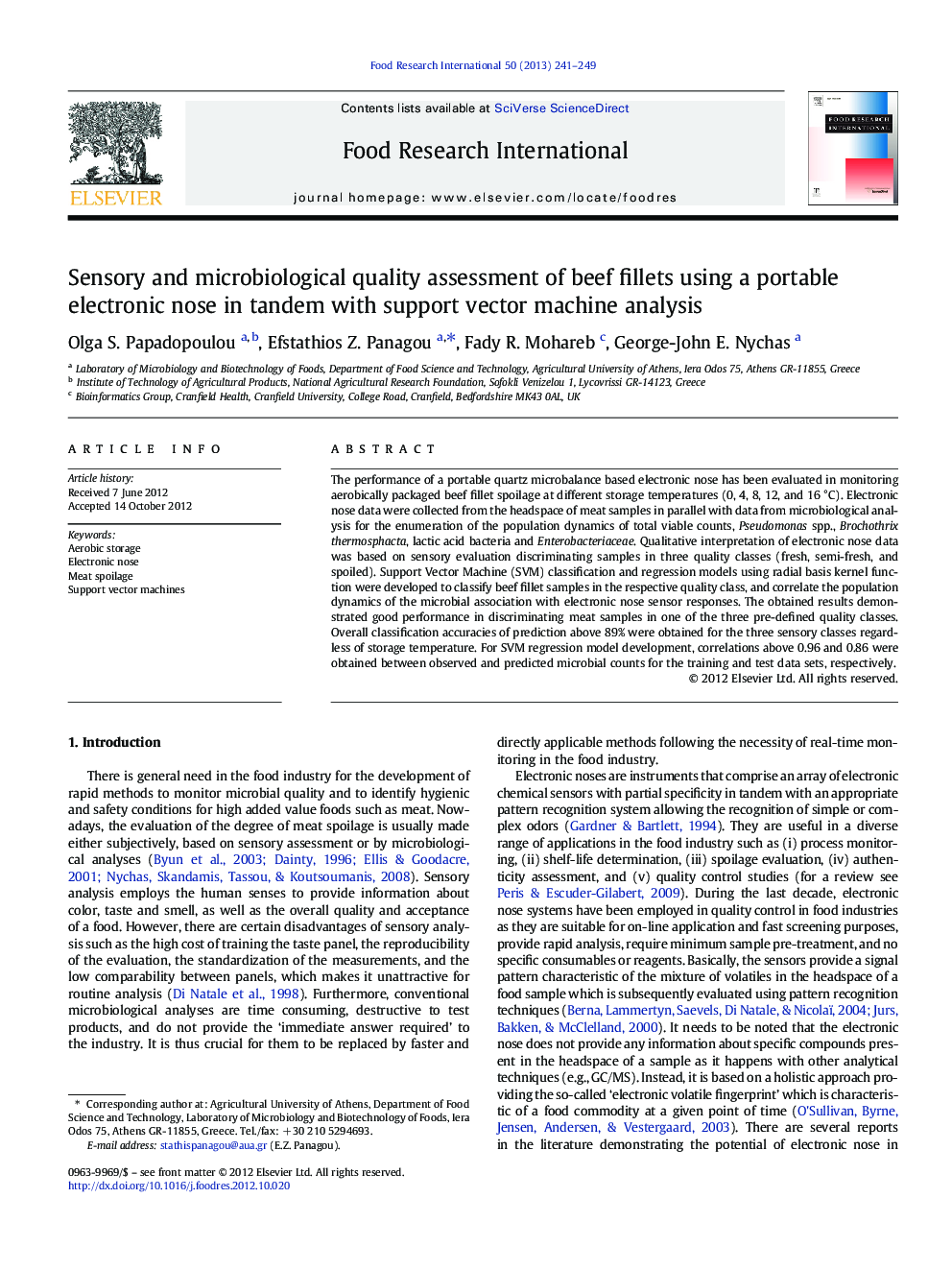| Article ID | Journal | Published Year | Pages | File Type |
|---|---|---|---|---|
| 6398857 | Food Research International | 2013 | 9 Pages |
The performance of a portable quartz microbalance based electronic nose has been evaluated in monitoring aerobically packaged beef fillet spoilage at different storage temperatures (0, 4, 8, 12, and 16 °C). Electronic nose data were collected from the headspace of meat samples in parallel with data from microbiological analysis for the enumeration of the population dynamics of total viable counts, Pseudomonas spp., Brochothrix thermosphacta, lactic acid bacteria and Enterobacteriaceae. Qualitative interpretation of electronic nose data was based on sensory evaluation discriminating samples in three quality classes (fresh, semi-fresh, and spoiled). Support Vector Machine (SVM) classification and regression models using radial basis kernel function were developed to classify beef fillet samples in the respective quality class, and correlate the population dynamics of the microbial association with electronic nose sensor responses. The obtained results demonstrated good performance in discriminating meat samples in one of the three pre-defined quality classes. Overall classification accuracies of prediction above 89% were obtained for the three sensory classes regardless of storage temperature. For SVM regression model development, correlations above 0.96 and 0.86 were obtained between observed and predicted microbial counts for the training and test data sets, respectively.
⺠Quartz microbalance E-nose can discriminate beef fillet quality in aerobic storage. ⺠Good correlation was obtained between e-nose and microbial data in beef fillets. ⺠E-nose data and chemometrics can be used in rapid spoilage detection of beef fillets.
